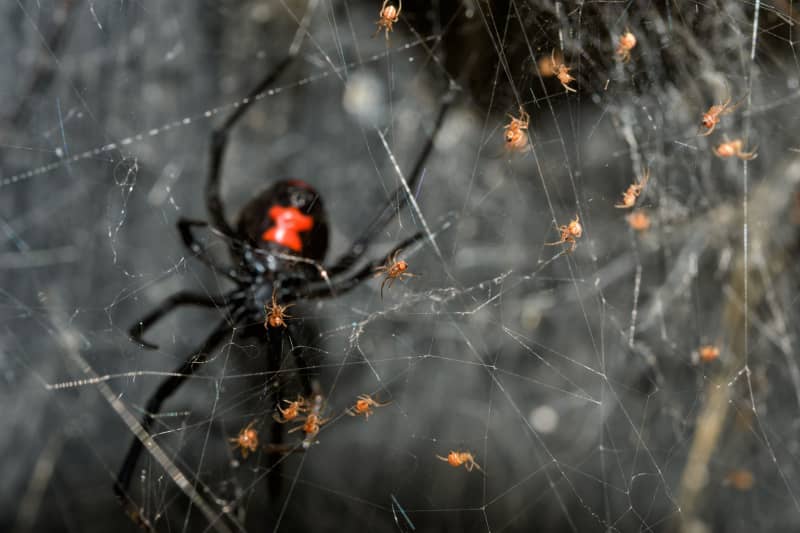The web is such an essential part of a spider’s life that some researchers consider it an extension of the animal’s consciousness.
We humans have traditionally thought that complex thinking requires big, convoluted brains and the central nervous system of a vertebrate.
But what can a small brain, even the size of a pinhead, with a structure completely different from ours, be capable of?
Scientists know that spiders remember when they have caught prey. Sergi also believes that they can remember the shape of their web like a map in their brain. They take different routes and sometimes even use \”shortcuts\” to get to their prey faster.
However, this map would be very different from our map, as web-weaving spider species rely more on their sense of touch than sight. Jumping spiders’ predation, on the other hand, is more like that of vertebrate beasts.
A black widow weaving a web feels the vibration of the web with her feet and uses it to find her prey. The web is such an integral part of a spider’s life that some researchers think of it as an extension of the spider’s cognition or consciousness.
So far, researchers don’t know exactly how detailed spiders’ memories are, or how they affect the tiny animals’ decision-making. However, Sergi’s research reinforces the idea that spiders’ memory may be significantly more advanced than we previously thought.
The size of the prey matters to the spider
In the center of the spider’s web is a dense trapping net, to which unsuspecting flying insects cling. The fishing net is attached to the surrounding fixed surfaces with \”anchor nets\”. These webs can be the fate of walking insects.
When the black widow feels that something extra is caught in its web, it heads to the prey, ties it in sticky silk and pulls the meal to the shelter in the middle of the web with a thread.
In his research, Sergi cut the thread and stole the catch with tweezers. The black widow knew how to look for a lost meal in the right place on the web, thus giving indications that it remembered the location of the prey.
When the catch was stolen from the anchor net, the black widow came looking for it more often. This behavior indicated that the black widow knew how to judge an insect clinging to the outer edges of the net, traveling along the surfaces, as an easier and larger meal.
According to researchers, the behavior of spiders also shows that arthropods are capable of more complex thinking than expected. Previous research has also investigated their special, web-connected sensory world.
By changing its position, the spider can feel the different frequencies of the vibration and perhaps thus distinguish the prey from a possible mating partner or from the garbage caught in the web.
It is not yet known how long the memories remain in the spiders’ minds. The next step in the research is to find out the permanence of the catch memory.

